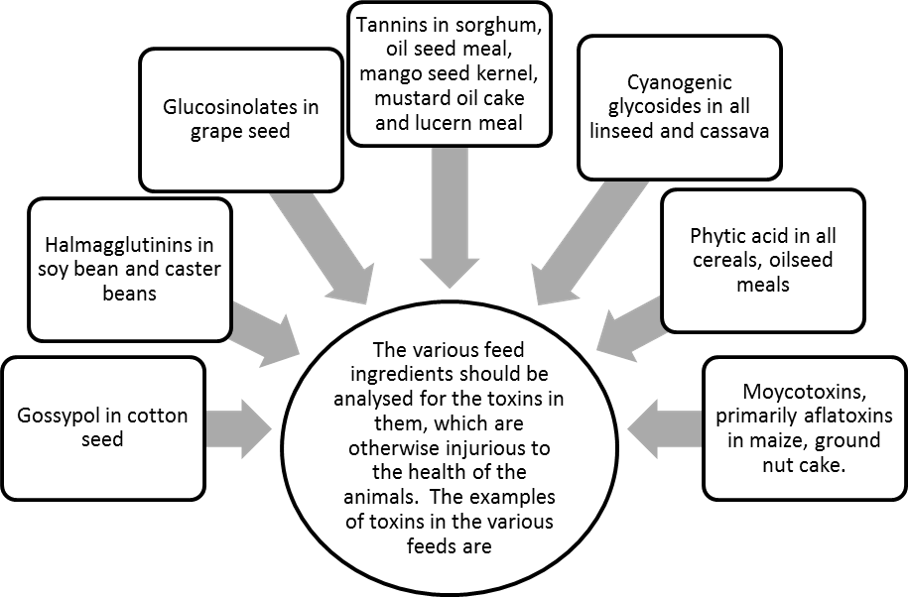The presence of any adulterants can indicate an ingredient of poor quality that should not be used as it might affect the overall suitability and quality of the feed blend.
Ingredient Quality (Quantitative)
Chemical analysis: Moisture, CP, CF, EE, NFE, ash, acid insoluble ash (silica or sand), salts, free fatty acids, biogenic amines urea, and NPN, amino acids.
Anti-nutritional factor: Extrinsic (contaminants); mycotoxins, weeds, insecticides, herbicides, fungicides.
Intrinsic: allergins, lectins, phytoestrogens, glucosinolates (rapeseed), saponins, tannins, ricin, sinapine, gossypol (cottonseed cake), lipoxygenase, trypsin inhibitor, urea.
Decomposition and rancidity test: acid value, peroxide value, etc.
Protein quality: protein solubility or dispersibility, nitrogen solubility, Maillard reaction product, dye binding, pepsin digestibility, amino acid digestibility.
An analytical laboratory for the precise estimation of nutrient contents and contaminants is of utmost importance. Analyse the feeds for proximate principles. This indicates possible constraints on usage due to the presence of excessive content of crude fibre, fat or total ash. Low crude protein and high crude fibre (CF) levels of oilseed meals are indicative of adulteration with fibrous material. The high CF alone is indicative of adulteration with urea and or some inferior quality oilseed meals.
The amount of acid-insoluble ash is a good guide to the amount of sand or other dirt which may be present. Fish meals are usually adulterated with sand during the drying process.
It is also desirable to determine the free fatty acid content of oily materials as this will affect palatability due to the rancidity of oils. The chemical composition or specifications of various animal feeds are laid down, which acts as guidelines for the suppliers, buyers and the users at the farm level. Protein meals should also be analysed for their amino acid contents.
Ingredient Specification
Ingredient specifications are essential in a feed quality assurance program. Specifications serve as the basis from which purchasing agreements are written, feed blends are formulated, and ingredient inspections are performed.
Ingredient description and general nutritional specifications may be found in specifications for feeds and feed ingredients. Specifications of feeds must be as comprehensive as possible, realistic, and must be transmitted to the seller. These are the measuring sticks to which the delivered material must conform.
Specifications are the foundation of a quality assurance program because they serve as an understanding between nutritionist, purchasing and production departments. A list of feed ingredients and their target nutrient level is presented as an example. Some analytical procedures are given to detect the various types of adulteration.
Toxins in Animal Feed

Ultraviolet screening is used whereby a greenish-yellow fluorescence is observed when the sample is exposed to ultraviolet light to detect mycotoxins. One should get the best source of supply and one should have some idea of normal levels of toxicity which may be expected.